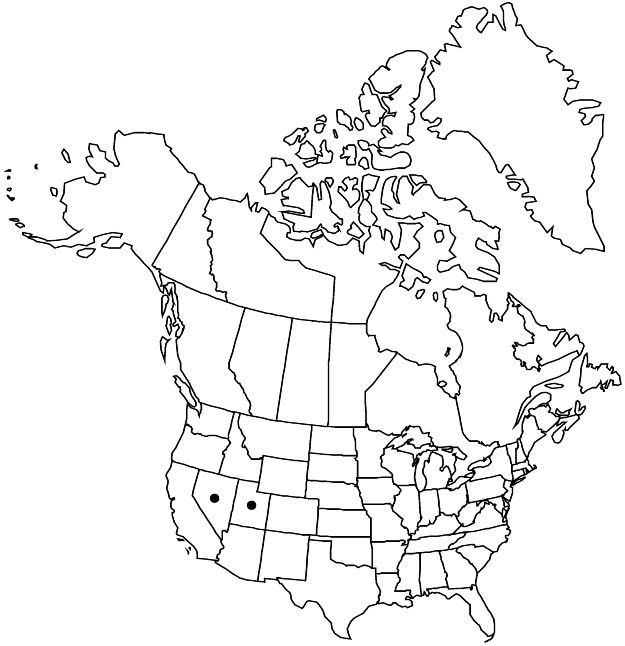Sphaeralcea caespitosa
Contr. W. Bot. 12: 4. 1908.
Common names: Tufted globemallow
Conservation concernEndemic
Revision as of 22:21, 13 August 2020 by RevisionBot (talk | contribs) (Bot: Adding category Revision Pending)
Plants perennial. Stems 1–3(–5), erect, gray-green, 2–2.5 dm, white-gray canescent. Leaf blades gray-green or green, ovate, unlobed or 3-lobed, 5–8 cm, wrinkled, not rugose, base cuneate, margins coarsely toothed, surfaces stellate-pubescent. Inflorescences racemose, open, 3–6-flowered, tip not leafy; involucellar bractlets tan. Flowers: sepals 11–15 mm; petals red-orange, 15–22 mm; anthers yellow. Schizocarps flattened-spheric; mericarps 13, 3–6 × 2–4.5 mm, chartaceous, nonreticulate dehiscent part 60% of height, tip rounded, indehiscent part not wider than dehiscent part. Seeds 1 or 2 per mericarp, brown or black, minutely pubescent.
Distribution

Nev., Utah
Discussion
Varieties 2 (2 in the flora).
Selected References
None.
Key
| 1 | Leaf blades thick, gray-green, densely pubescent; staminal column 3.5–5 mm; Beaver and Millard counties, Utah. | Sphaeralcea caespitosa var. caespitosa |
| 1 | Leaf blades thin, green, sparsely pubescent; staminal column 6–9 mm; Nye County, Nevada. | Sphaeralcea caespitosa var. williamsiae |